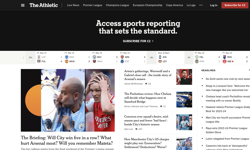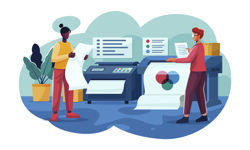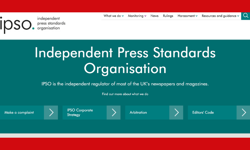NS president David Fordham (pictured), told agency planners, MDs, digital heads, clients, research experts and publishers at the launch event: “More than 80% of adults read a local newspaper in print and ironically, at a time when our revenues have been under such challenge, local media audiences have been growing across multimedia platforms.” He said people spend more than half their time within a five-mile radius of home and are increasingly interested in local news. “The local paper is still the first place they turn to – in print and online.”
He added: “The development of a robust and reliable system of multimedia audience measurement has been one of the biggest challenges facing all media today. Locally Connected now gives advertisers a unique cross-media planning system, allowing them to effectively target local communities across the UK in print as well as online.”
Daren Rubins, managing director, PHD Media, welcomed the initiative saying: “Local communities are fantastically important and what is interesting at the moment is that most media channels are becoming more national and the opportunities to actually target on a very bespoke level basis are becoming few and far between now.”
Daniel Stephenson, head of digital marketing for the COI, said: “Delivering communications at a post code level where they’re really tailored to local issues is potentially very powerful… What is particularly exciting about Locally Connected is that it’s a tool that will drive up our understanding of our audiences and in particular their use of newspapers on and off line.”
The project was instigated in 2006 by the NS, working alongside JICREG and ABCe with the aim of extending the regional press readership database to encompass newspapers’ online audiences and provide agencies and advertisers with a geographical system for analysing the combined net reach of a newspaper and its website within circulation areas down to postcode sector level.
NS communications director Lynne Anderson, who led the project, said: “Both buyers and sellers were agreed on the need to move away from the historic focus on a newspaper’s paid circulation and towards a more meaningful measurement of total reach. Agency planners told us their clients were increasingly looking for multimedia solutions at a local level but that it was hard to convince them to invest without hard data to back it up.”
Telmar, the leading international media planning software and consultancy company, was commissioned by the NS in 2007 to develop the methodology for integrating internet audience data with print readership data.
“On average the research shows us that a monthly online campaign in conjunction with a single advertisement in the newspaper will increase reach by 14% - and in some cases much more,” said Dick Dodson, managing director of Telmar Europe. “This additional reach will be more upmarket and in the core 25-64 age group since the website audiences are significantly biased towards these groups compared to the newspaper audiences.”
The internet audience data are underpinned by audited web traffic data, survey data (combined sample size of 100,000+ adults) and statistical analysis and modelling. The NS and JICREG have worked with publishers, agencies and the IPA to develop and test the planning tool at each stage of the project. The pioneering online research work conducted for Trinity Mirror by Survey Interactive, and also for Northcliffe Media and Johnston Press, has been a fundamental element of the project.
Lynne Robinson, research director, IPA, said: “The technical challenge in producing this has been significant given the scale and granularity of the data required; this has been achieved by using a unique blend of original research and industry standard auditing all fused together by rigorous modelling.”
The work has been independently and positively appraised by Ken Baker Associates, the respected market research statisticians who previously appraised IPA’s Touchpoints. They described a “high level of accuracy” in the modelling and concluded: “A great deal of expertise has been demonstrated in constructing this model. Any further modelling on newly available data sets is likely to improve the model, but improvements will be small.”
Richard Foan, managing director, ABCe, said: “I think it’s fantastic that the regional newspaper brands have delivered self-regulation of accountability for their online delivery using the industry agreed standards and having the results independently verified by ABCe, thereby delivering the stamp of trust that is so important in the digital age.”
Howard Scott, chairman of JICREG, said: “Locally Connected is a major development for JICREG and local media audience measurement. It has only been possible because of an enormous amount of painstaking work by a determined and dedicated group of people.”
Internet audience data were released alongside print readership figures in July, with the all-important data showing net reach of regional and local newspapers and their websites available from today on the live JICREG planning system.
Audited traffic figures for the largest local media sites are released by ABCe alongside newspaper circulation data on a six-monthly basis. JICREG audience figures are updated twice a year in line with new circulation data and, now, web traffic data.
Building on the Locally Connected work, the NS is now embarking on a qualitative digital insight projectwhich will look at how, why, when and for how long people engage with their local newspaper website and how this differs from other internet usage. Results from the wanted ads Digital will be available in early 2010.
Previous research conducted by TNS Media for the NS has shown that local websites draw on the inherent qualities of their parent newspapers, making their advertising nearly twice as trusted and relied-upon as other website advertising:
Seven of the largest local media groups, representing 70% of the industry, are part of Locally Connected with more expected to follow. The groups are: Trinity Mirror, Northcliffe Media, Johnston Press, Newsquest, Guardian Media Group, Midland News Association and Iliffe News & Media.










